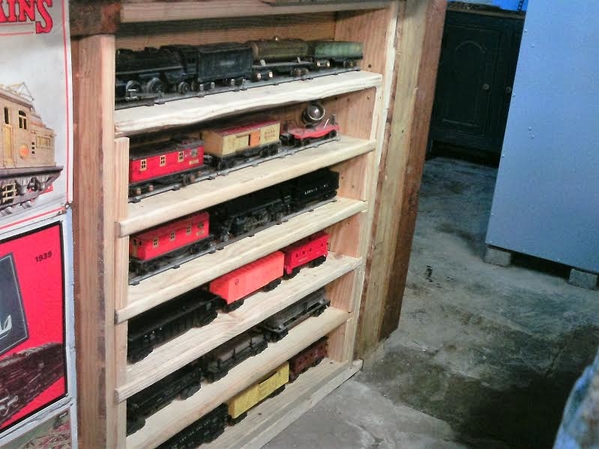If I had room to put train shelfs on the side of my layout bench work, I would just make one, a ramp for underneath the layout storage tracks. I'm still thinking on this project of mine.
Why not just connect them to the layout as a staging yard so you can drive them on to the layout when you want to run them ?
But won't it take LOTS more space to make up an elaborate grade(s) to store as many as simple one over the other shelving would provide? By the time you allow for the grades, switches (assuming you want more than one storage spur/shelf), it takes a lot of space just to get to the different levels vs simple shelves. And switches combined on grades is often not considered a good idea. You start to use up huge amounts of space, and unless the layout is NJHR sized, it will be noticeable for most home layouts.
I like the side shelf idea. Pretty sure this has been shown on many layouts in OGR or CTT over the years. Adding grooves as John suggested to help keep them in place might be a good idea.
Or maybe even some sort of slide on plexiglass cover to both keep them from falling out due to casual contact and maybe even limit the dust a little. I'm thinking something like screws driven into the wood, less the thickness of the plexiglass, then holes the size of the heads of the screws in the plexi, with a slot that is narrower than the head, but the right width for the threaded part of the screw. The plexi can then be lowered onto position, resting on the screws and lifted up for removal. I've not actually done this yet, but have been thinking about something along these lines for a while.
-Dave

























